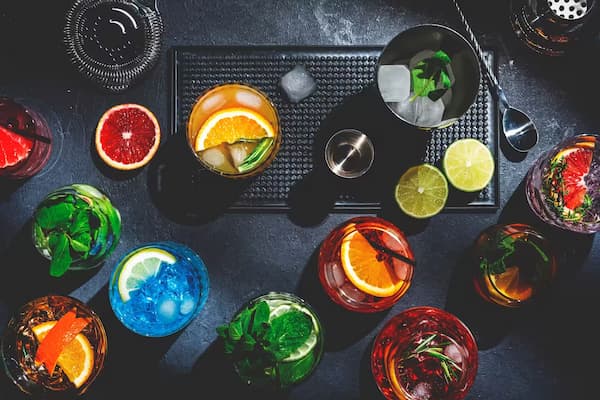Grape Juice
With Grape Juice you can make
We've got 4 cocktails that can be made with Grape Juice.
Find out what to make with Grape Juice
Q&A
What is the history and origin of grape juice as a cocktail ingredient?
Grape juice has a rich history dating back to ancient civilizations, where grapes were cultivated for both wine and grape juice consumption. Its use in cocktails, however, gained popularity in the late 19th and early 20th centuries. The advent of pasteurization by Thomas Welch in the 1860s allowed for the preservation of grape juice without fermentation, making it a popular non-alcoholic alternative. As the temperance movement and Prohibition era in the United States encouraged the search for alcohol substitutes, grape juice found its way into the world of mixology, serving as a base for many non-alcoholic drinks and cocktails. Today, it is celebrated for its versatility and flavor in the cocktail scene worldwide.
What different varieties of grape juice are used in cocktails and how do they differ?
In cocktails, grape juice primarily comes in two main varieties: red and white, with occasional use of rosé. Red grape juice is known for its deep, full-bodied flavor, making it ideal for richer, more robust cocktails. White grape juice, on the other hand, has a lighter and more delicate taste, perfect for enhancing the subtlety of flavors in sophisticated drinks. Rosé grape juice offers a balance between the two, with a slightly fruity and floral profile. The variety used can drastically alter the taste, color, and overall aesthetic of the cocktail, allowing mixologists to craft a wide range of drinks from the refreshing and simple to the complex and nuanced.
How is grape juice incorporated into cocktails?
Grape juice can be incorporated into cocktails in several ways, depending on the desired outcome. It can be used as a primary mixer, combined directly with spirits and other ingredients for a quick, refreshing drink. For more complex cocktails, grape juice can be shaken or stirred with a combination of spirits, syrups, bitters, and ice to fully integrate its flavors. It can also be reduced into a syrup for a concentrated flavor, or mixed with herbs and left to infuse for a more subtle taste. The versatility of grape juice makes it a fundamental ingredient in the creative process of cocktail making.
Can grape juice be used to create non-alcoholic cocktails, and if so, how?
Absolutely, grape juice is a staple in non-alcoholic cocktail creations, offering a delicious and versatile base for mocktails. Its natural sweetness and depth of flavor make it an excellent alternative to alcoholic components. To create non-alcoholic cocktails, mix grape juice with other non-alcoholic mixers like tonic water, ginger ale, or soda water for effervescence and additional flavors. Adding fresh fruit, herbs, and spices can further enhance its taste, creating sophisticated and enjoyable drinks that everyone can enjoy.
What are some popular cocktails that feature grape juice, and how are they served?
Several popular cocktails feature grape juice as a primary ingredient. The ‘Grape Sparkler’ is a simple yet refreshing mix of grape juice with sparkling water, served over ice and garnished with fresh grapes. The ‘Grapefruit and Grape Juice Cooler’ combines grape juice with grapefruit juice, a splash of lemon, and soda water for a tangy and refreshing drink, often served with a slice of grapefruit on the rim. For a non-alcoholic take on a classic, the ‘Virgin Sangria’ mixes red grape juice with lemon-lime soda, fresh fruit, and a touch of cinnamon, served over ice in a wine glass. These drinks showcase the versatility of grape juice in creating both simple and sophisticated beverages suitable for any occasion.
Ingredients like Grape Juice
Other Juices
How it works
Easily create your bar from the ingredients you have at home, and we'll show you what you can make with the ingredients you have to hand.
Once you've added this ingredient head to your My bar page and fill up everything else you have.
We'll also show you cocktails that can make by substituting what you have for one of the ingredients you don't, riffing on the original. Now go forth and create something delicious!




































